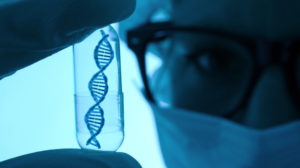People are living longer than ever, but largely due to improved methods of medical treatment. We talk about the human epigenetic clock and how it’s possibly reversed below.
In this article:
- Epigenetic Interventions in History
- Biological Age vs. Chronological Age
- How the Epigenetic Clock Is Measured
- Signs We May Be Able to Turn Back the Clock
Epigenetic Interventions in History
In the Middle Ages, for example, a broken leg could easily kill you. Today, a broken bone is almost a rite of passage.
Death rates from heart disease in the 21st century are lower than in the 1950s, but actual rates of heart disease are higher than ever.
In other words: we just have better interventions to keep people from dying.
What we need isn’t better treatment for the diseases of age. We need a way to stop aging altogether.
What progress have we made in turning back the epigenetic clock?
Biological Age vs. Chronological Age
We measure age by years, and we see a certain set of problems as “typical” for people in their 40s, and another set for people in their 50s, and so on down the line until we reach the “normal” problems of old age.
What if it didn’t have to be this way? What if your biological age could be far younger than your chronological one?
We’ve seen glimpses of this on a small scale in the normal course of ordinary life. We all know some older people whose bodies seem to deteriorate far more quickly than others and others who are fast and strong well into their 90s.
The next step for science is understanding how to help all of us turn back the clock.
How the Epigenetic Clock Is Measured

Most of us are born with a largely healthy set of DNA. Every day, however, various cells within us die and new ones replace them.
Each new cell builds itself using a copy of the needed DNA. TBut the copies don’t always copy precisely right, and over time, these errors are compounded.
In particular, the epigenetic clock is a way of measuring DNA methylation.
DNA Methylation: The addition of a methyl group to DNA, modifying gene expression.
As this methylation advances, it inhibits DNA transcription. For us, this basically means that our DNA becomes more corrupted as we age, and methylated DNA is linked to all the typical signs of aging.
To find our “true” age, epigenetic clocks measure the rate of methylation in our DNA and compare this to our chronological age.
For most of us, our chronological age and DNA methylation rates are closely correlated.
A look at our DNA can tell a scientist how old we are within an error rate of fewer than four years. There are plenty of practical uses for this measurement already.
Imagine being able to tell the age of a murder victim just from some trace blood left behind, or if governments had a quick way to tell if an asylum seeker is the 15-year-old they claim to be?
The real question here is much bigger: can we reverse epigenetic markers like DNA methylation?
Signs We May Be Able to Turn Back the Clock
1. The Clock Can Already Run at Different Rates
We don’t have a definitive way to turn back the clock yet, but there are some promising things to note.
The first is we already see that there are things that can speed up or slow down the clock. This suggests the clock is dynamic.
If it can be sped up or slowed down, why can it not be halted altogether or reversed?
Scientists have observed that cancer and type 2 diabetes make the clock speed up. Smoking, alcoholism, a junk food diet, and a sedentary lifestyle are all capable of speeding up DNA methylation.
Reversing these behaviors and engaging in more positive ones, like getting regular exercise or staying in healthy dietary ketosis, can slow it down.
2. Reprogramming Cells
Another key to turning back the clock could lie in finding a way to reprogram our cells.
When our bodies developed in our mother’s wombs, our cells were made from pluripotent stem cells. These stem cells were capable of becoming any cell we needed.
The same pluripotent stem cell can become a part of the liver or the eye; turn into a bit of muscle or bone; make up a joint or a ligament. They do it without producing the epigenetic marker errors our aging cells do.
Until recently, we believed adult stem cells could never regain this type of flexibility, but then Dr. Shinya Yamanaka discovered that certain proteins are capable of turning adult cells into pluripotent stem cells.
Further research showed that these induced iPs cells could then be used to reprogram the cells of a mouse to reduce epigenetic errors. When this reprogramming was performed on mice with progeria (a condition that accelerates aging dramatically), they lived 25% longer and in good health, never developing the tumors that would normally have been expected.
This is just the beginning. We don’t know if this reprogramming works on mice aging at a normal rate yet.
There are also questions about the long-term effects and how well such a treatment could translate into human aging interventions, but we’re well on our way.
3. Human Trials
Only a few human trials have been done, and again, they show promise while still leaving us with questions.
In one trial, a cocktail of two diabetes drugs combined with recombinant human growth hormone was used to target the thymus and strengthen the human immune system. After 12 months of therapy, the average participant’s epigenetic clock was younger by two and a half years than when they started.
There were only nine participants in this short study. With no control group and no way to measure long-term, ongoing results, we don’t yet have enough information to act.
Although we certainly have enough information to keep looking for ways to reverse biological aging.
Extending the human lifespan without turning back the effects of aging is a losing proposition in the long term, if only because of the crushing burden of healthcare costs. A better understanding of aging, combined with concerted efforts to develop therapeutic interventions that genuinely reverse the aging process, is the next step in human development.
Takeaways:
- Biological Age is able to be slowed, by targeting the DNA Methylation patterns that change Gene expression.
- Current human trials are hopeful in using different intervention techniques to reduce Biological Age.





